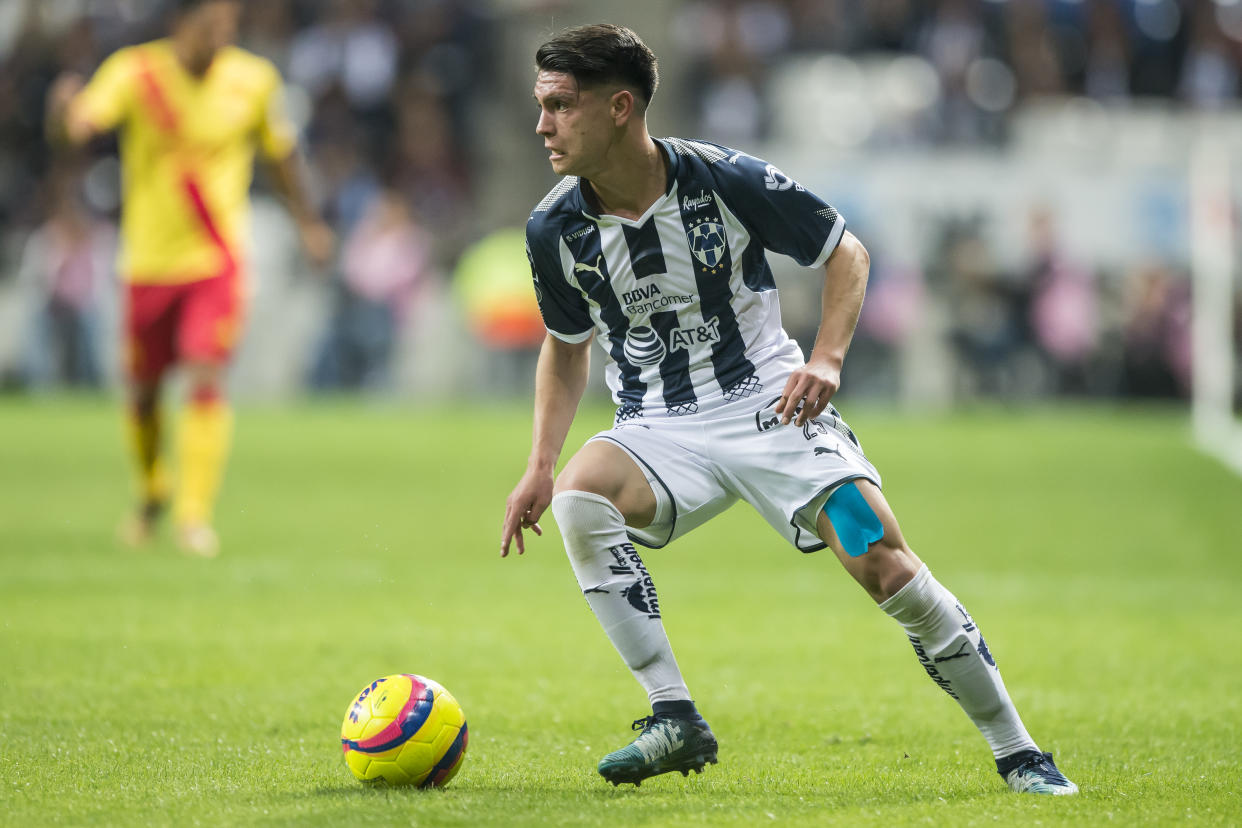Jonathan Gonzalez's Mexico switch could haunt the USMNT for years

The reconstruction of the United States men’s national team is beginning in earnest with a January camp roster announced Monday that includes 21 players age 24 or younger. It begs the question what the point of those nine overage players is.
But we’ll get to that.
Because the bigger story is the defection of midfield mega-prospect Jonathan Gonzalez to the Mexican program. Gonzalez, an 18-year-old Californian, busted into Monterrey’s starting lineup this season and helped the club top the Liga MX Apertura. He earned Liga MX Best XI glory for himself. At his age, that’s a feat that doesn’t trail Christian Pulisic’s breakout with Borussia Dortmund by very much.
Yet in spite of spending his entire youth national team career with the U.S., he seems to have slipped away. Univision Sports reported on Monday, just before the U.S. released its roster, that Gonzalez was planning to file a one-time switch. The Washington Post’s Steven Goff confirmed the report.
Should Gonzalez follow through, there will be no returning to the U.S. team, whether Mexico actually cap-ties him or not.
This is, and will continue to be, the source of considerable hand-wringing by U.S. fans, as Gonzalez could have helped to form the spine of the team, along with Pulisic and perhaps Weston McKennie, for the next decade and a half or so.
Gonzalez represented the U.S. at youth international levels, but was left off the roster for the 2017 Under-20 World Cup. And he was apparently irked that he didn’t get a call for the senior team’s November friendly against Portugal, when a slew of other untested prospects were given at the very least an invitation to camp.
Some reports posit that he wasn’t considered ready by the U.S. coaching staff – although that was true of plenty of other players, like Josh Sargent, who has yet to even make his senior team debut with Werder Bremen. Others speculate that Gonzalez was left out because he was getting ready to play in the Liga MX playoffs with Monterrey. Yet he told Soccer America last month that he was never contacted by anybody from U.S. Soccer.
At any rate, doubt crept in for the teenager, who had been steadfast in his commitment to the U.S. in spite of leaving for Monterrey’s academy when he was 14.
If Gonzalez does indeed cross the national team border, it will be a considerable blow to the U.S. program at a time when it can hardly suffer more negative publicity. And by all accounts, it could all have been avoided by keeping Gonzalez involved. The final throes of a failing qualifying campaign was perhaps an inopportune time to introduce or cap-tie him – then again, maybe the fresh blood could have been rejuvenating – but there were other ways to keep him on board.
Of all the men’s national team’s failures in 2017, this one could reverberate and haunt it almost as much as missing the World Cup, should Gonzalez grow into the superstar he’s projected to become.
Anyway, back to the January camp team. It is indeed a men’s World Cup year, except that it’s one which won’t feature the U.S. in a World Cup for the first time since 1986. This changes the methodology considerably, of course. Whereas a January camp in 2014, or any other year in which the U.S. was about to embark on a World Cup adventure, would have mostly featured seasoned, domestically-based veterans, with coaches trying to work out where they might fit onto the roster, this one is different.
Of the 30 players called in, 10 have never been to a senior national team camp before, and 15 have yet to get on the field for the U.S. This, then, is basically an extended tryout for players who have come through the national team pipeline or who have distinguished themselves in MLS. And they are trying out for a coaching staff that won’t be long for the national team at that. Interim head coach Dave Sarachan and his staff are holdovers from the Bruce Arena regime, which failed to right the qualifying campaign gone awry under Jurgen Klinsmann.
The latter was fired in November 2016, and Arena resigned following the elimination from World Cup qualifying in October 2017. So what the look is really worth, given that a new head coach likely won’t be hired until later this year – and possibly not until after the World Cup in the summer – is debatable.
Yet inexplicably, the camp roster did include veterans such as Justin Morrow, Ike Opara, Dom Dwyer and CJ Sapong, who are aged 30, 28, 27 and 29, respectively. What use there is for them in a camp beginning to lay the groundwork for the next national team is unclear. After all, there isn’t another World Cup the U.S. might play in for nearly five years.
Even Dwyer, the youngest of that bunch will be 32 then, and unlikely to be a major factor. He was a long-shot to even make the 2018 team, had the U.S. qualified. Equally baffling is the continued inclusion of Gyasi Zardes, the 26-year-old forward who has demonstrated several times over in his 37 caps that he doesn’t belong at the international level.
Still, the average age of the roster will be a shade over 24 when camp opens Wednesday. It will conclude with a friendly against Bosnia and Herzegovina in Carson, Calif. on Jan. 28. But on that day, or likely any day thereafter, the Americans will be without Jonathan Gonzalez.
And his absence might loom larger than the presence of any of the 30 players made national teamers on Monday.
Leander Schaerlaeckens is a Yahoo Sports soccer columnist and a sports communication lecturer at Marist College. Follow him on Twitter @LeanderAlphabet.



